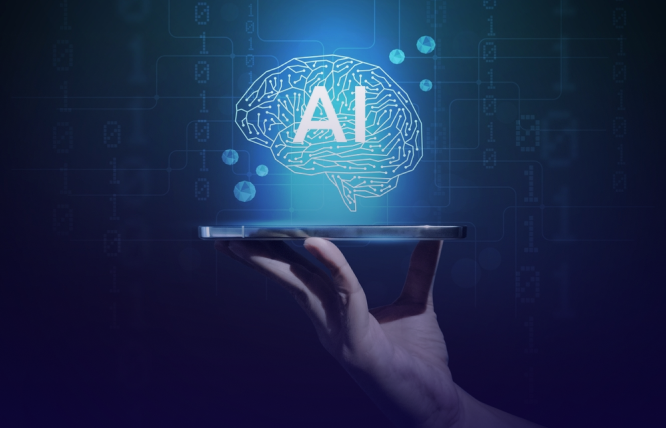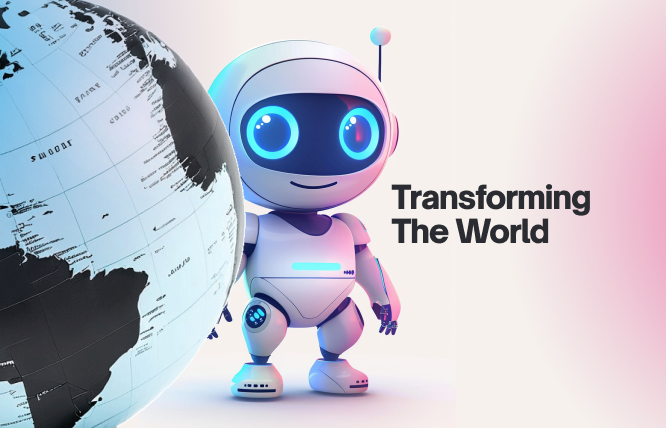Introduction
This blog offers you a detailed overview of how to learn artificial intelligence effectively. It covers practical learning resources, core AI concepts, essentials of AI, and other important information.
Artificial Intelligence (AI) is rapidly transforming different industries, from finance to healthcare. We don’t know how fast AI is advancing, but this pace is prominent enough to get attention.
Since AI is advancing at a rapid pace, as is evident from artificial intelligence digital transformation, it is essential to leverage its capabilities. This blog offers a detailed view of how to learn artificial intelligence effectively, allowing you to harness its power for professional and personal growth.
The Benefits of AI Learning
| Benefits | Description |
Contributing to Societal Advancement | You can use AI to address leading global challenges such as education, healthcare, and climate change |
Improved Decision-Making | AI-powered tools can offer beneficial insights and data-driven recommendations for informed decision-making |
Increased Job Opportunities | AI-related proficiency can allow you to follow lucrative career paths in business, research, and technology |
Enhanced Problem-Solving Skills | AI fosters a systematic approach to problem-solving. This will aid you in creating innovative solutions |
It is important to talk about “How can AI help my business?” Let this blog answer it for you.
The Essential Foundations
A solid foundation in programming and mathematics is important for mastering AI. If you are wondering “how to learn artificial intelligence” this is a great place to start.
Let us do a breakdown of the essential concepts:
Mathematics
Probability: Learn about probability theory, including conditional probability and Bayes’ theorem.
Statistics: Get familiar with statistical inference, hypothesis testing, and probability distributions.
Calculus: Get to know differentiation and integration for modelling and optimisation.
Linear Algebra: Understand matrices, vectors, and their operations.
Programming
Python: This is AI’s de facto language because of its versatility, simplicity, and extensive libraries such as Pandas and NumPy.
Other Relevant Languages: Be hands on with languages such as C++ for particular AI applications.
Many online AI courses teach these essential concepts. Understanding such concepts can allow you to create better learning management software or any software via AI.
Core AI Concepts
Let’s dive into these concepts and take another important step to answer the question, “How to learn artificial intelligence?”
Deep Learning
Neural Networks: Get to know the components and architecture of artificial neural networks.
Recurrent Neural Networks (RNNs): Explore RNNs for sequential data processing, like natural language understanding.
Convolutional Neural Networks (CNNs): Understand how CNNs are utilised for video and image processing.
Generative Adversarial Networks (GANs): Discover GANs for generating new data, such as text and images.
Machine Learning
Unsupervised Learning: Identify structures and patterns within unlabelled data (e.g. dimensionality reduction, clustering)
Supervised Learning: Train models on labelled data to predict outcomes (e.g. regression, classification).
Reinforced Learning: Give training to agents so that they can make decisions by interacting with an environment and receiving penalties or rewards.
When discussing machine learning and deep learning, AI experts also discuss the merits of cloud computing digital transformation and AI strategies for business innovation.
Computer Vision
Image Classification: Identify scenes or objects present within imageries.
Object Detection: Locate and classify objects in images.
Image Segmentation: Divide images into regions that correspond to different categories or objects.
Natural Language Processing (NLP)
Text Generation: Create human-like text, such as writing poetry or articles.
Machine Translation: Translate text from one language to another.
Sentiment Analysis: Determine the text’s emotional tole (e.g. neutral, positive, negative)
Text Classification: Categorise text into predefined classes (e.g. sentiment analysis, spam detection)
Robotics
Robotics Concepts: Get to know the fundamental robotics principles, such as control, dynamics, and kinematics.
Robotics Applications: Go through different robotics applications, like healthcare, manufacturing, and exploration.
Robotics Programming: Understand how to program robots via languages such as the Robot Operating System (ROS).
Practical Learning Resources
Open-Source Projects: Contribute to open-source AI projects to get valuable experience and collaborate with others.
Kaggle: You can take part in Kaggle competitions and leverage its massive dataset collection to practice your skills.
Blogs and Tutorials: Go through websites that offer beneficial articles and tutorials on AI topics.
Books: Read the latest books on Deep Learning and Machine Learning by leading authors.
Online Courses: Platforms such as Coursera offer several AI courses for different skill levels.
Build Your AI Portfolio
This is a must-do thing for those exploring “How to learn artificial intelligence?”
Personal Projects: Work on personal AI projects. Build a portfolio that can serve you both in the short and the long run.
Contributing to Open-Source Projects: Contribute to the present open-source AI projects to attain valuable exposure and to collaborate with experts.
Hackathons: Your participation in AI hackathons will allow you to solve real-world problems and network with individuals with similar interests.
The Future of AI in Business: A Revolution Indeed
AI is advancing at a rapid pace its influence on businesses across the spectrum is becoming more profound. It is safe to say that the future of AI in businesses is promising, and the possibility of revolutionising different industries and driving noticeable growth is now closer to reality than ever before.
Technology solution services that incorporate AI can present businesses with a competitive edge. This can be done by improving efficiency and automating tasks. For instance, on demand software development can be utilised to create customised AI solutions that are tailored to specific business requirements. These solutions can include chatbots that significantly improve customer service or predictive analytics tools that optimise operations.
Since AI is likely to become more advanced, it is normal for businesses to expect even more innovative applications coming soon. Of course, all of this will further shape the digital economy’s landscape.
Concluding Remarks
nowing how to learn artificial intelligence is more than just the acquiring technical skills. It is about the development of a problem-solving mindset and a passion for innovation. Since AI is evolving around the globe and your expertise and knowledge will be invaluable in driving progress and the creation of a better future.
If you are ready to incorporate AI into your business, contact FuturByte today. We are a globally recognised software development company with a proven track record of helping startups and enterprises with AI-driven solutions.
Frequently Asked Questions
We can create various AI solutions, such as recommendation systems, chatbots, and systems for predictive analysis and automated processes.
Yes, AI can create smarter products and services by providing valuable insights, improving user experiences, and enhancing features.
This time varies, depending on your business’ existing infrastructure and the solution’s complexity.
Have questions or feedback?
Get in touch with us and we‘l get back to you and help as soon as we can!




